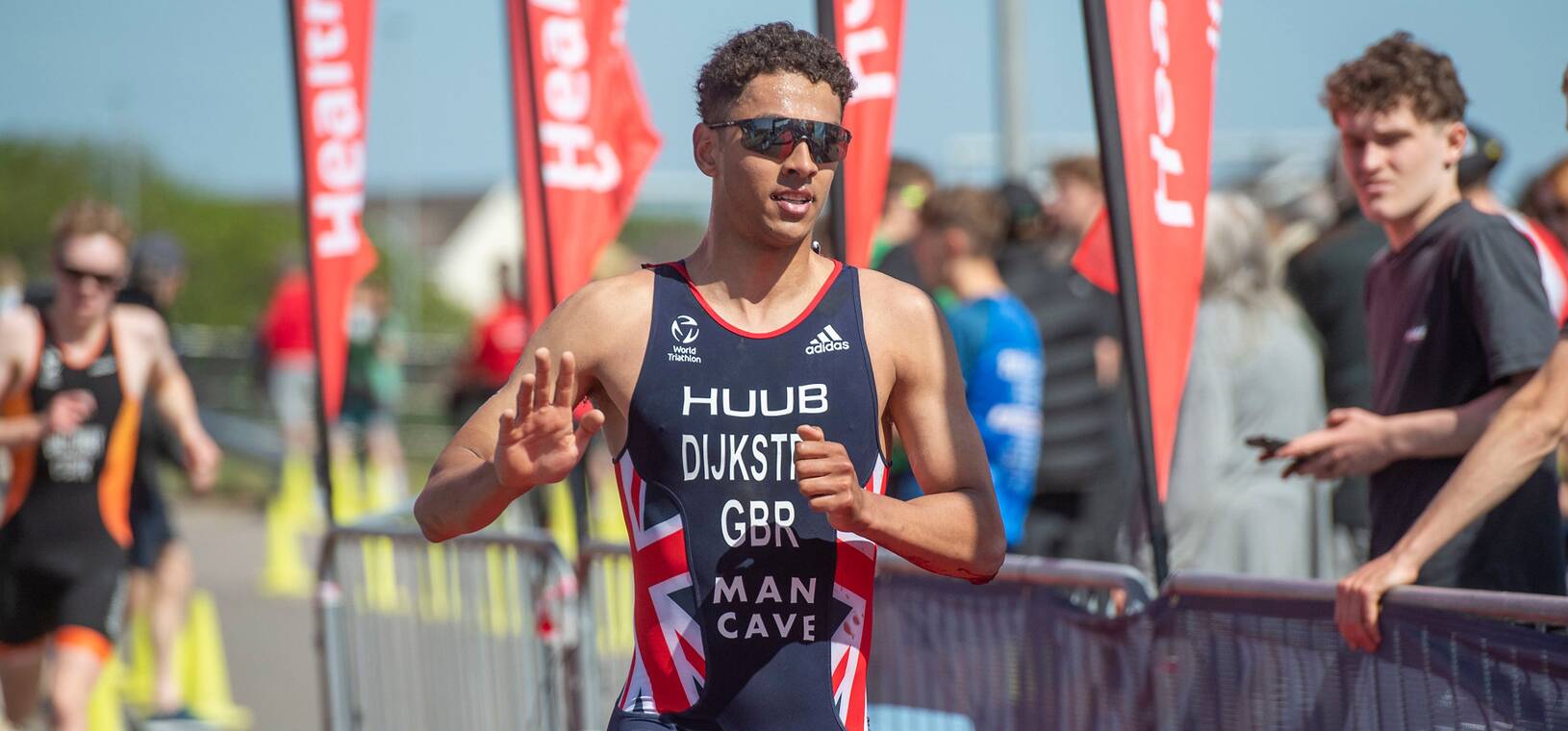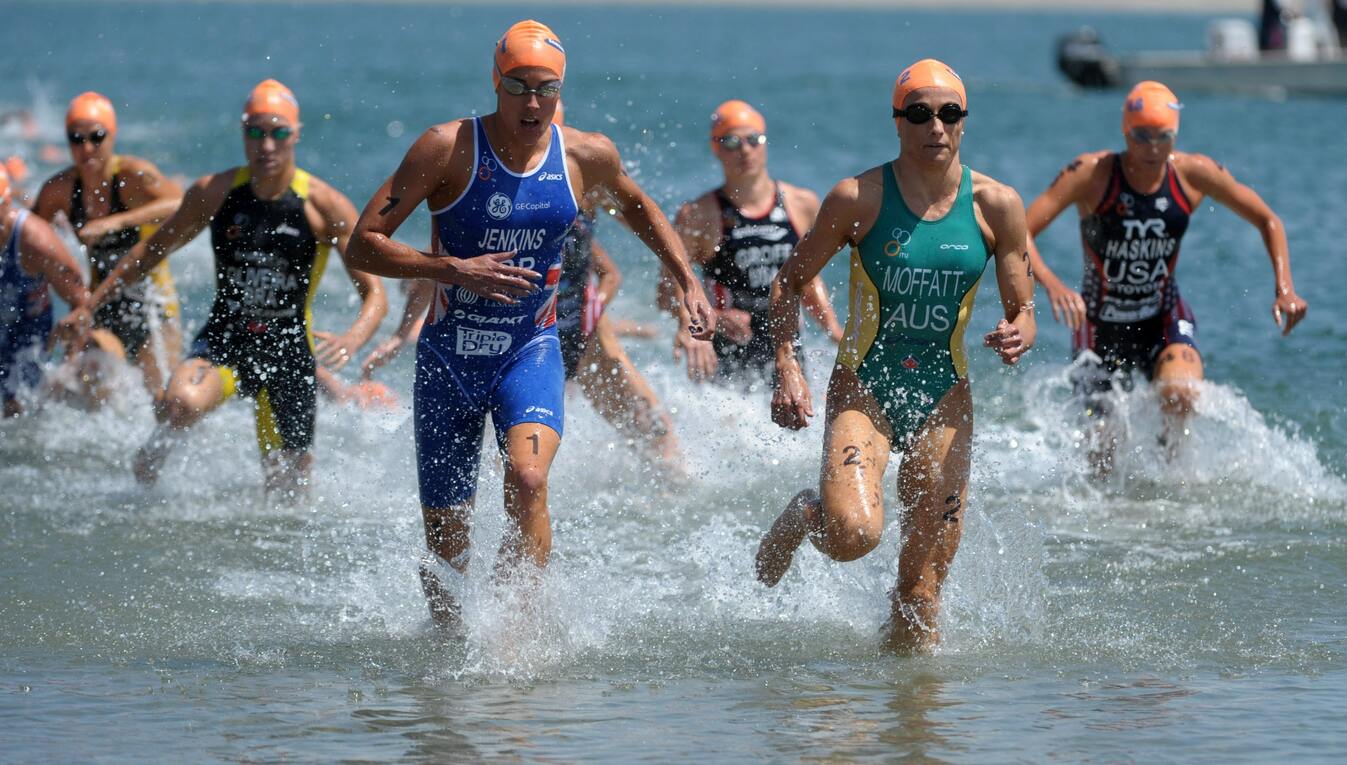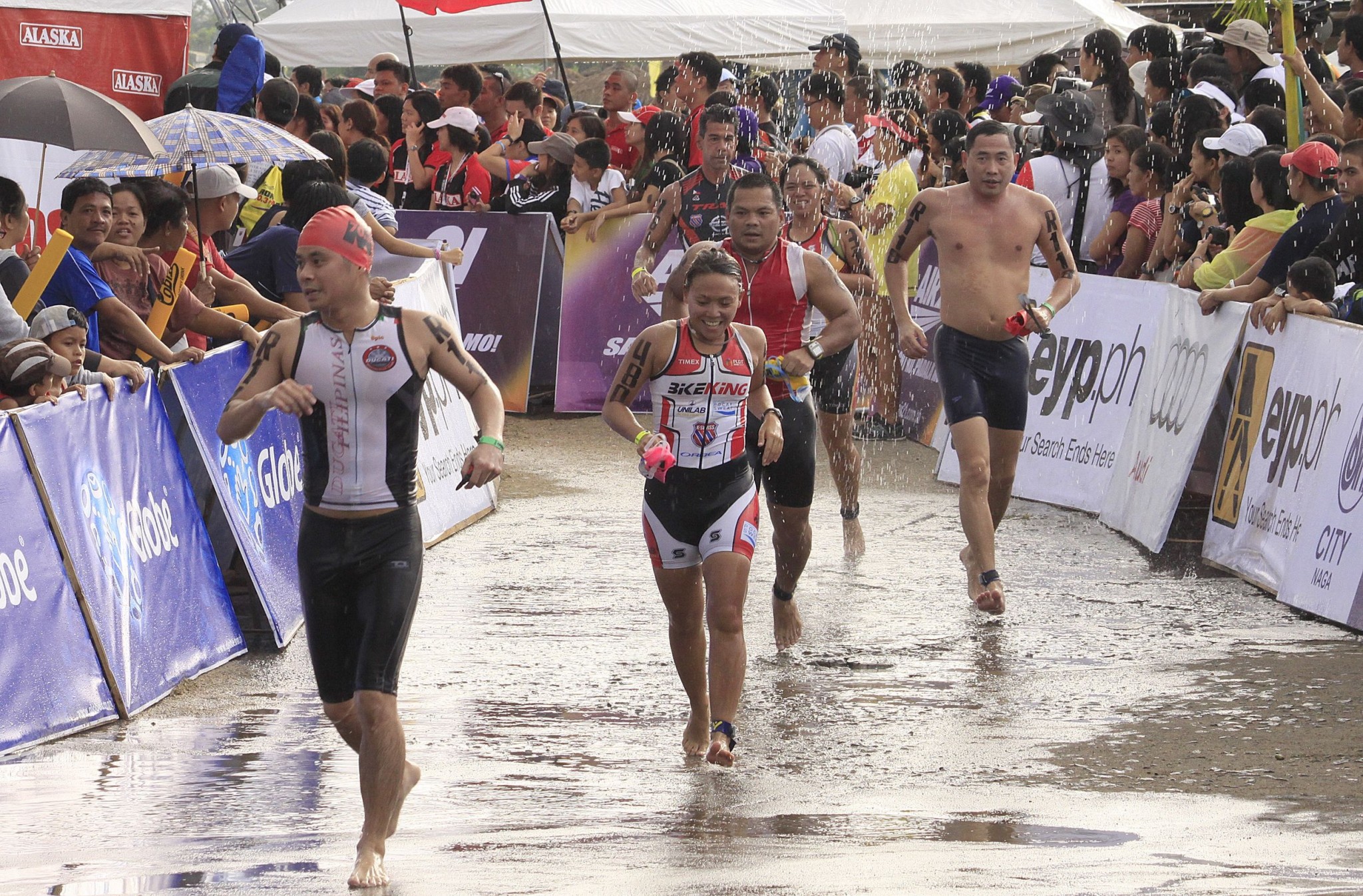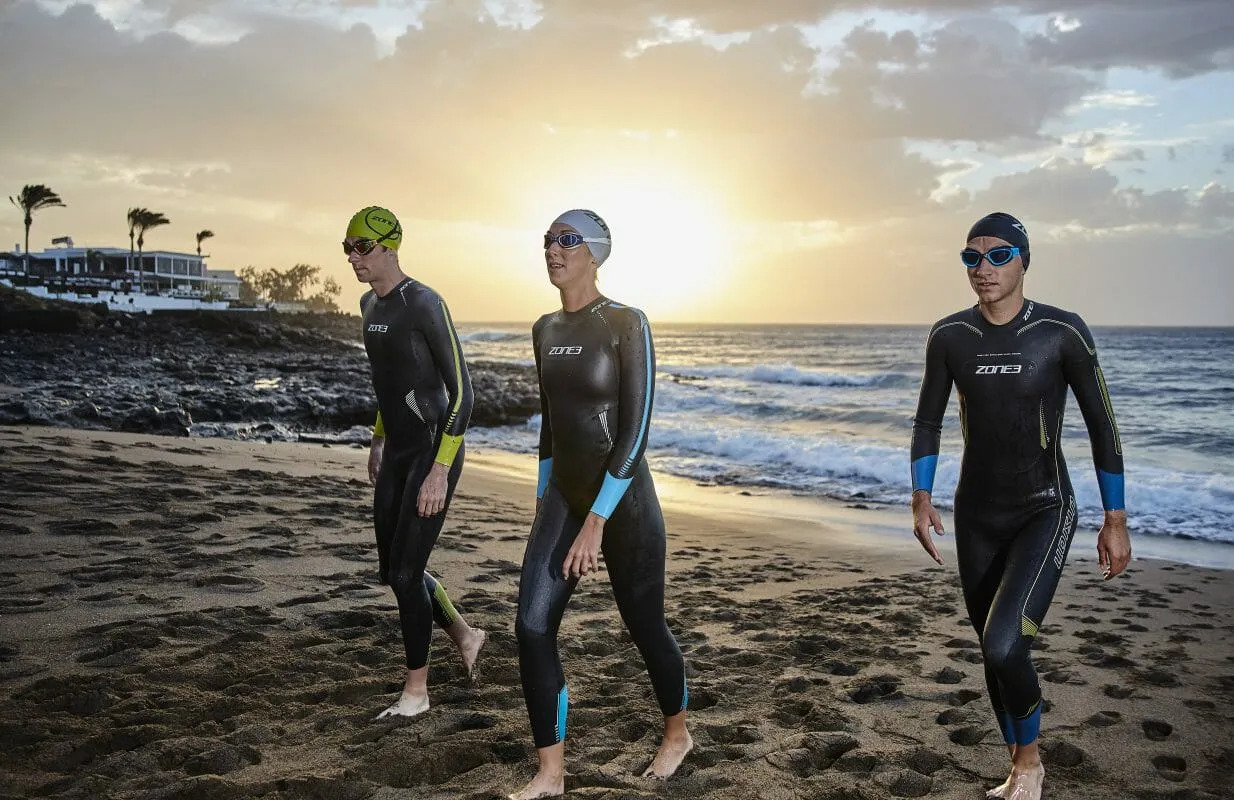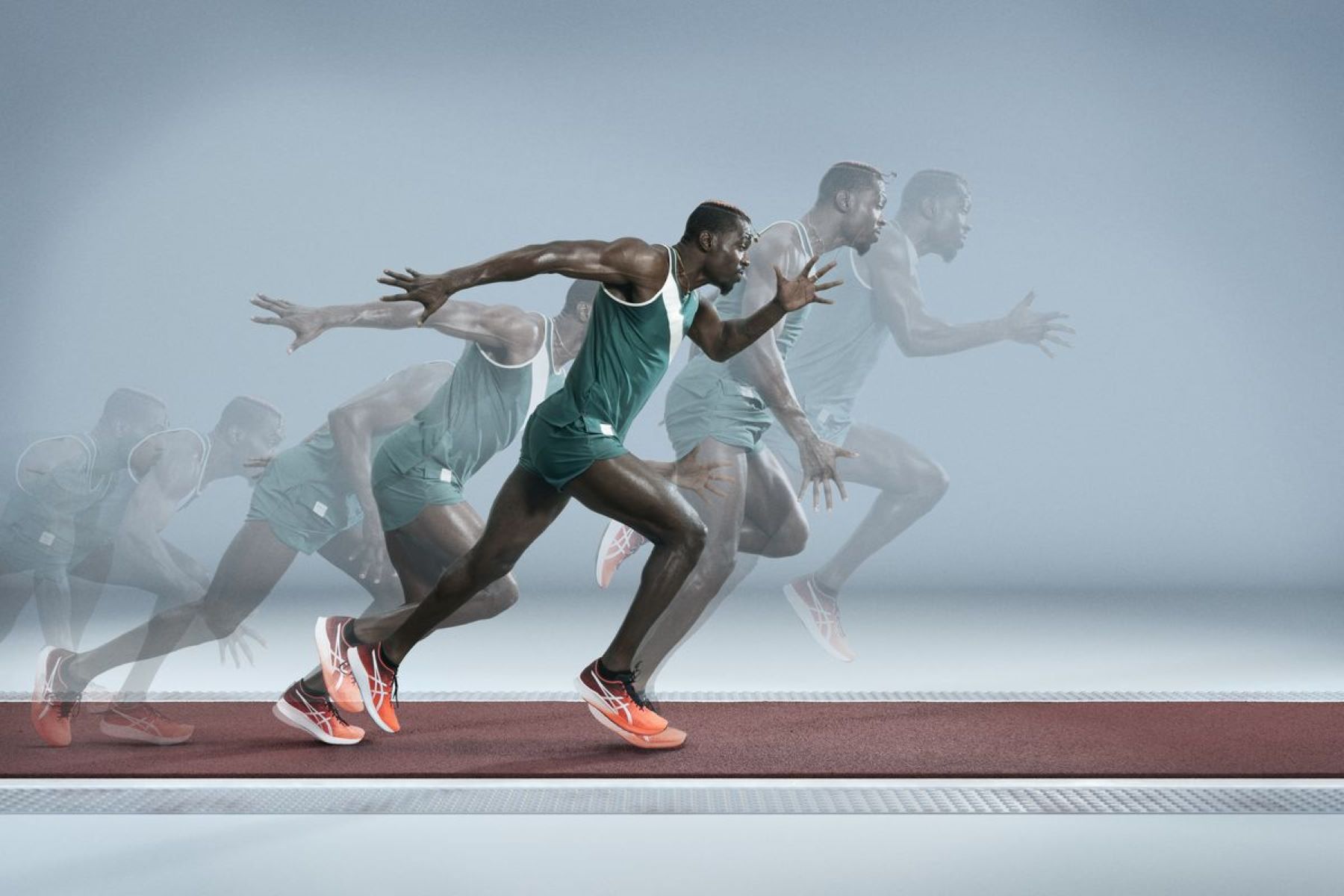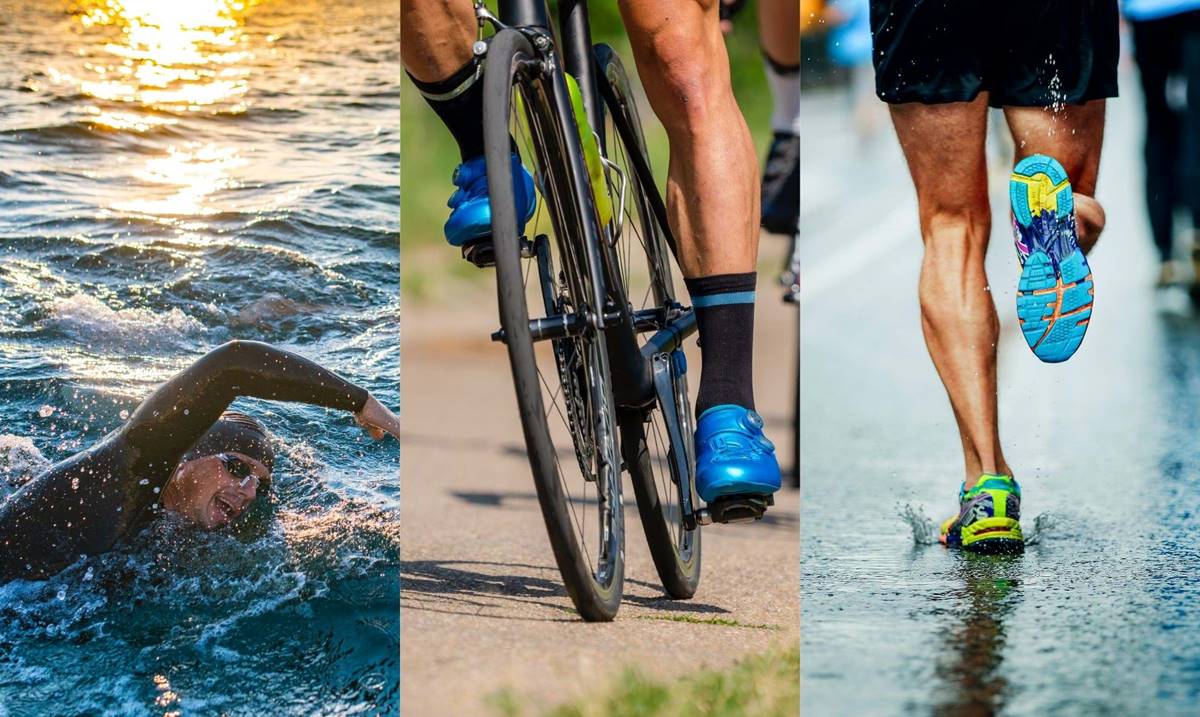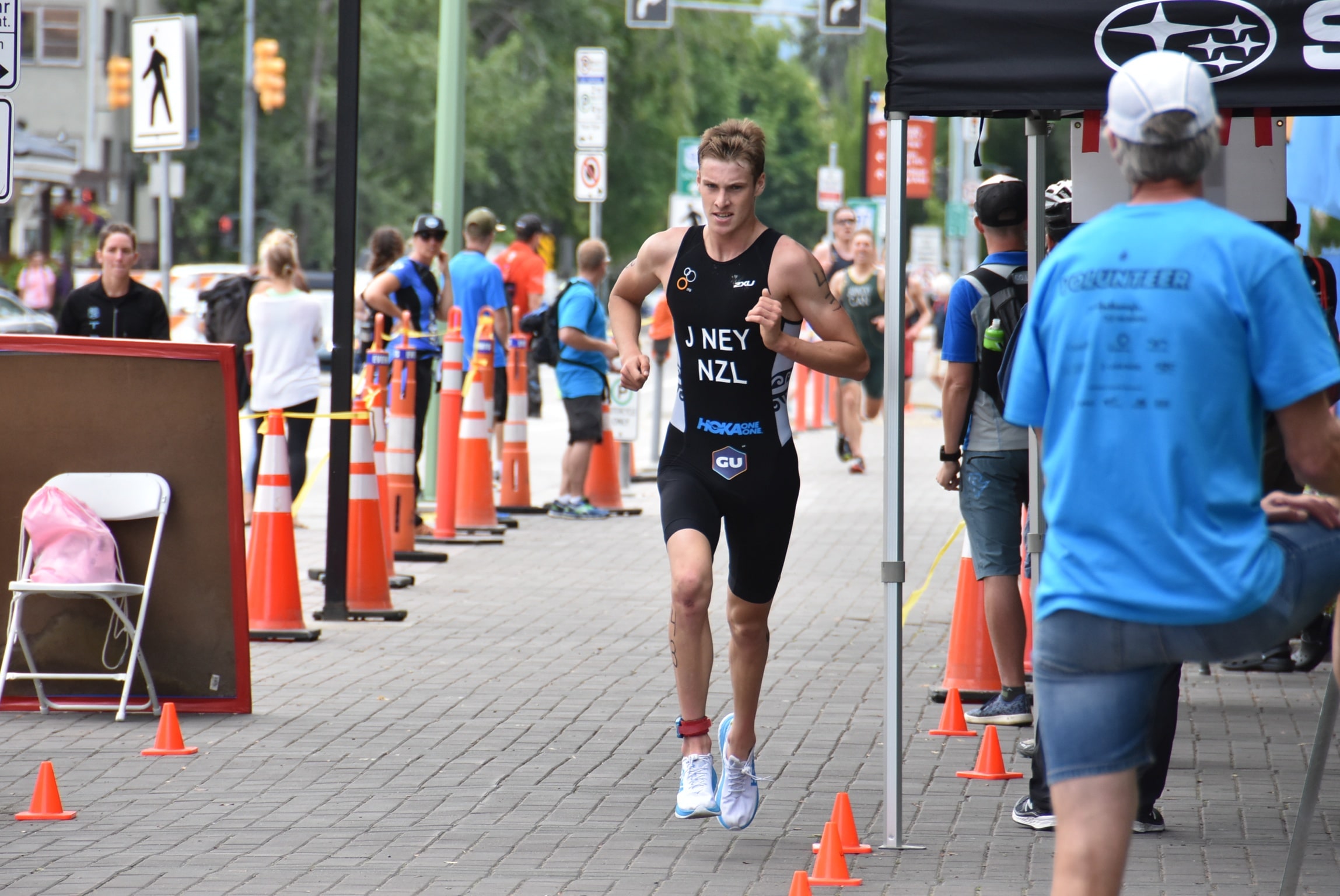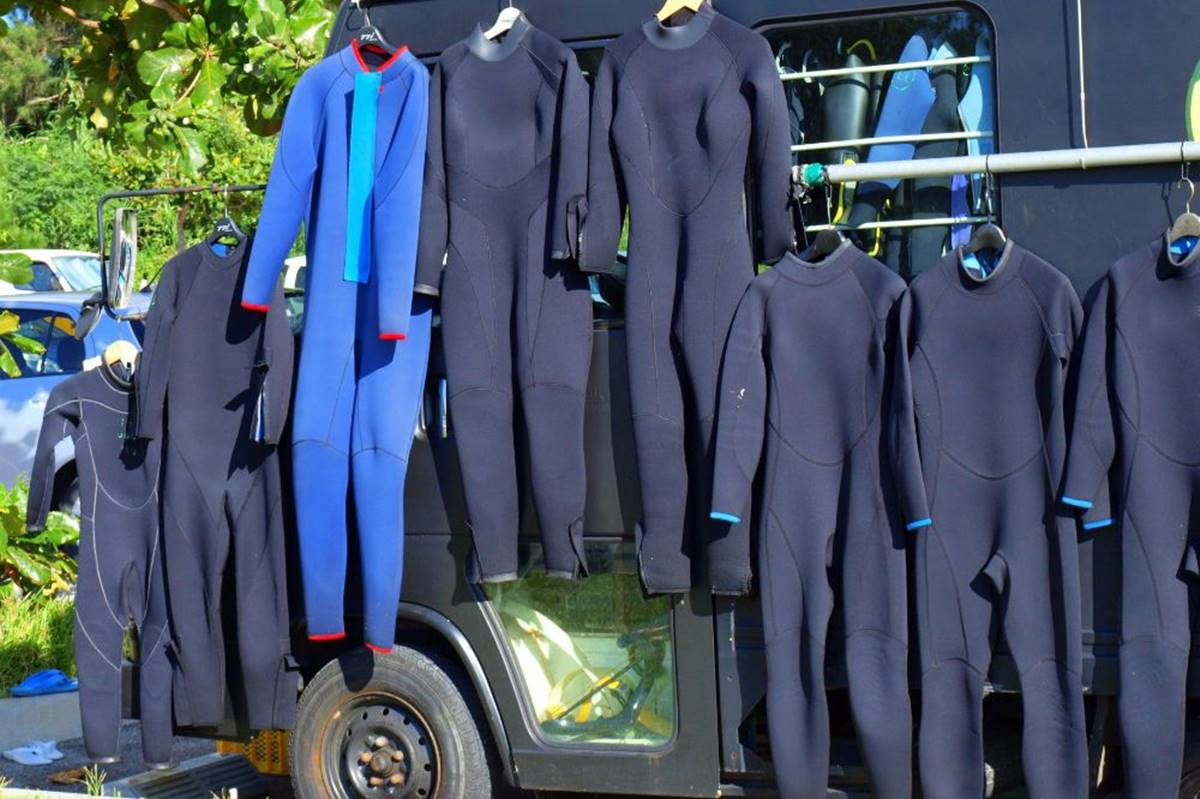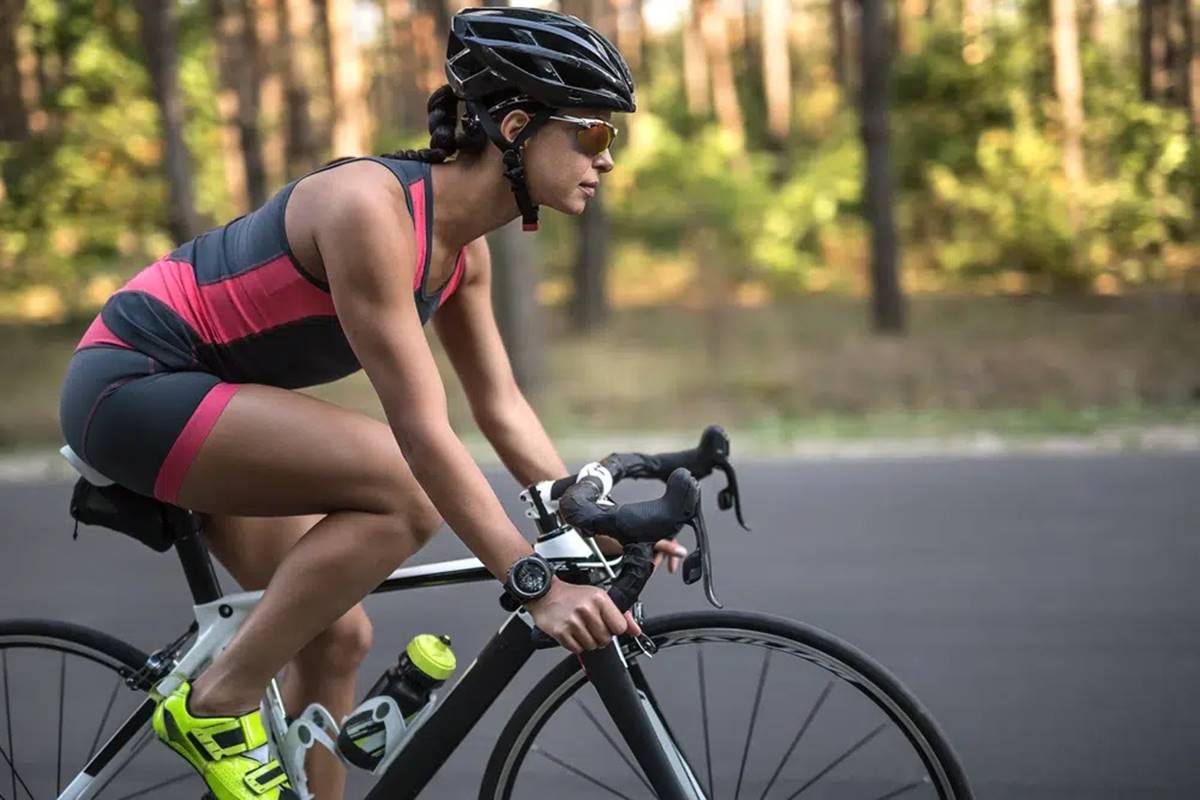Home>Misc>Featured>What Do I Wear Under Wetsuit For Triathlon
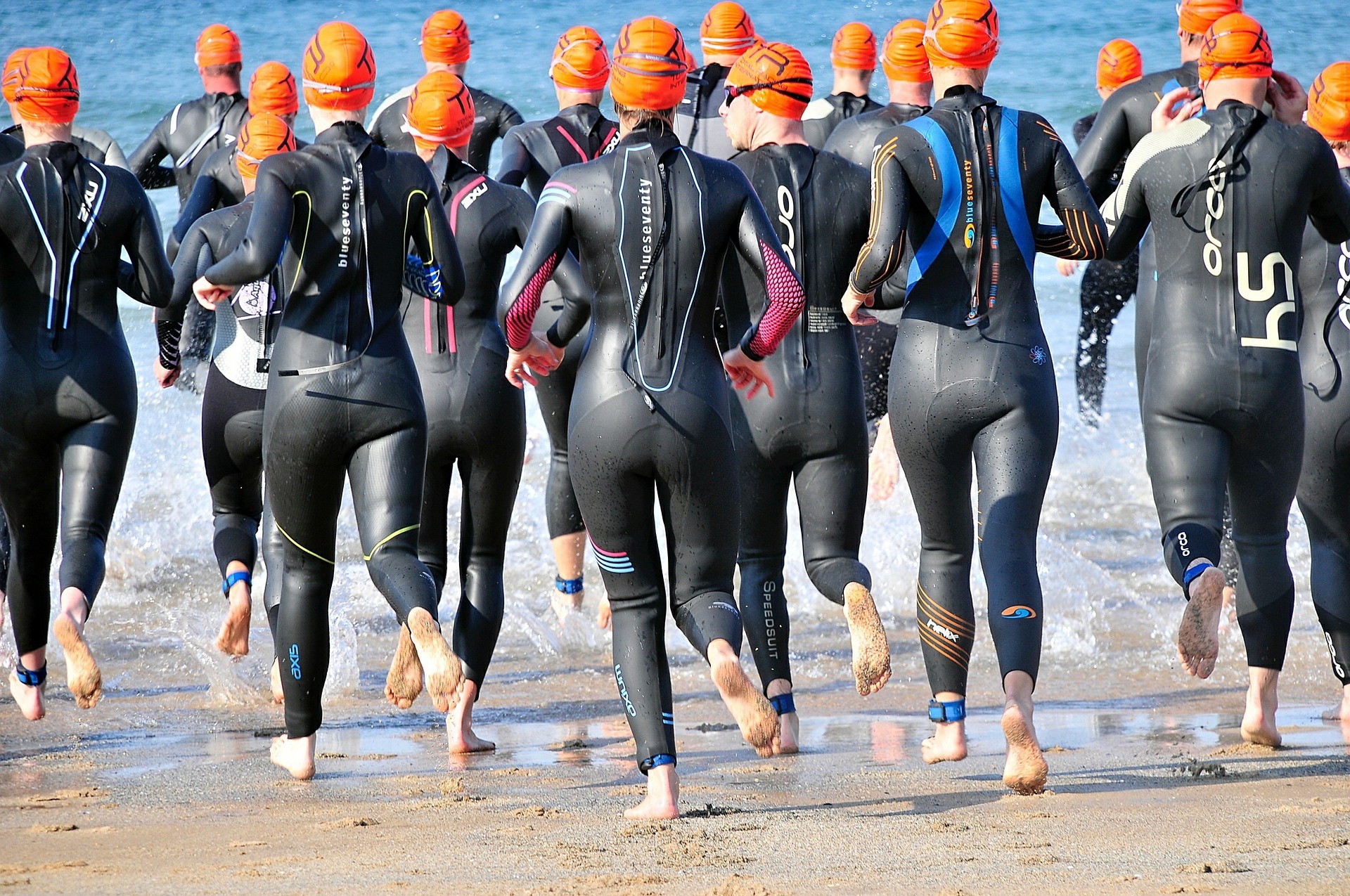

Featured
What Do I Wear Under Wetsuit For Triathlon
Published: August 12, 2023
Discover the essential undergarments you should wear beneath your wetsuit for a triathlon. Find top tips and featured products for ultimate comfort and performance.
Introduction
When it comes to participating in a triathlon, proper gear is essential to enhance your performance and provide you with the comfort you need. While most triathletes focus on selecting the right wetsuit, it is equally important to consider what to wear underneath it. The clothing you choose to wear under your wetsuit can affect your comfort, movement, and overall experience during the race. This article will guide you on the options available for what to wear under a wetsuit for a triathlon and help you make an informed decision.
Why is it important to wear the right gear under your wetsuit? Firstly, the proper undergarments can prevent chafing and discomfort during the swim, bike, and run portions of the race. They can also provide additional insulation, helping to maintain your body temperature in colder water. Secondly, the right undergarments can offer support to your muscles, increase blood flow, and even improve your overall performance. Lastly, wearing the appropriate undergear can contribute to a more enjoyable and comfortable triathlon experience.
Now that we understand the significance of wearing proper gear under our wetsuit, let’s explore the different options available and discover what works best for you. Whether you prefer swimwear options, specialized triathlon undergarments, or comfortable compression gear, there is a solution that will suit your needs and preferences.
Importance of wearing proper gear under wetsuit
Choosing the right gear to wear under your wetsuit is crucial for a successful and comfortable triathlon experience. Here are a few reasons why wearing proper undergarments is so important:
- Reduces friction and chafing: The repetitive motions of swimming, cycling, and running can cause friction and chafing, leading to discomfort and potential skin irritation. Wearing the right undergear can minimize this friction, providing a smooth and comfortable experience.
- Enhances insulation: Open-water swimming can expose you to colder temperatures, especially in early morning or late season races. Proper undergarments can provide an extra layer of insulation, keeping your body warm and maintaining your performance.
- Improves performance: The right undergarments can offer support to your muscles, aiding in blood circulation and reducing muscle fatigue. Compression gear, for example, can provide targeted support to key muscle groups, increasing endurance and performance.
- Moisture management: Triathlons involve intense physical exertion, leading to sweat accumulation. Undergarments made with moisture-wicking materials can help keep you dry and comfortable by efficiently managing sweat and preventing odors.
- Customizable options: There are various undergarment options available to match your personal preferences and the specific requirements of the triathlon. From swimwear options to specialized triathlon undergarments, you have the freedom to choose what works best for you.
Wearing proper gear under your wetsuit not only enhances your performance but also contributes to a more enjoyable and comfortable race experience. By reducing discomfort, providing insulation, improving circulation, and managing moisture, the right undergarments can make a significant difference in your overall performance and race satisfaction.
Choosing the right type of wetsuit
A crucial factor in ensuring a comfortable and effective triathlon swim is selecting the right type of wetsuit. Here are some key considerations to keep in mind when choosing a wetsuit:
- Fit: A proper fit is paramount for optimal performance and comfort. A wetsuit should fit snugly against your body without being too tight or restrictive. It should allow freedom of movement for your arms and legs, enabling efficient swimming strokes.
- Material: Wetsuits are typically made of neoprene, a durable and insulating material. The thickness of the neoprene varies depending on the water temperature and personal preference. Thicker neoprene provides more insulation but may restrict mobility. Thinner neoprene offers more flexibility but may sacrifice some insulation.
- Style: There are two main styles of wetsuits: full suits and sleeveless suits. Full suits cover the entire body, providing maximum insulation but restricting arm movement. Sleeveless suits, on the other hand, offer more freedom of movement in the arms but provide less insulation.
- Buoyancy: Some wetsuits come with added buoyancy features, such as thicker panels around the chest and thighs. These features help to keep you buoyant in the water, improving your body position and reducing drag.
- Budget: Wetsuits vary in price depending on brand, quality, and features. Consider your budget and invest in a wetsuit that meets your needs and offers good value for your money.
- Triathlon-specific wetsuits: There are wetsuits specifically designed for triathlons, which often have features like easy exit zippers and quick-release panels. These can be convenient for transitioning from the swim to the bike leg of the race.
Take the time to research, try on different wetsuits, and seek advice from experts or experienced triathletes. Test the fit and comfort by simulating swimming movements before making your final decision. Choosing the right wetsuit that suits your body type, budget, and race conditions will go a long way in ensuring a smooth and efficient swim leg during your triathlon.
What to wear under a wetsuit for a triathlon
Now that you have selected the perfect wetsuit, it’s time to decide what to wear underneath it for your triathlon. There are several options available, each with its advantages and considerations. Here are some common choices:
- Swimwear options: Many triathletes opt to wear their regular swimsuit or swim briefs under their wetsuit. This is a popular choice as it allows for a streamlined and comfortable fit. Make sure to choose a swimwear option that is made of quick-drying and water-resistant material to prevent excess water retention.
- Neoprene shorts: Neoprene shorts provide additional insulation and compression for the lower body during the swim portion of the race. These shorts are designed to be worn specifically under a wetsuit and can help improve buoyancy and reduce muscle fatigue. They are a great option for colder water temperatures.
- Triathlon-specific undergarments: Triathlon-specific undergarments are designed to provide maximum comfort and functionality. These undergarments are made of quick-drying and moisture-wicking material, offering support and minimizing chafing. They often have a minimalistic design and can be worn under a wetsuit without causing any discomfort.
- Compression gear: Compression gear, such as compression shorts or tights, can be worn under a wetsuit to provide additional support to the muscles. Compression clothing helps enhance blood circulation, reduce muscle vibration, and improve muscle efficiency. It can be beneficial for longer-distance triathlons or athletes who prefer extra muscle support.
- No underwear option: Some triathletes choose not to wear any underwear under their wetsuit to minimize discomfort and ensure a snug fit. This option works well for those who find the wetsuit provides enough support and prefer a more natural feel.
When deciding what to wear under your wetsuit, consider factors such as personal preference, race distance, water temperature, and overall comfort. Whatever option you choose, make sure it allows for a full range of motion, offers the necessary support, and does not cause any irritation or chafing. Experiment with different undergarments during training sessions to find what works best for you before race day.
Swimwear options
One of the most straightforward choices for what to wear under a wetsuit during a triathlon is regular swimwear. Many triathletes prefer this option as it provides a comfortable and familiar fit. Here are a few swimwear options to consider:
- Swimsuits: Traditional swimsuits, such as one-piece or two-piece suits, are a popular choice. Look for suits made from quick-drying fabric that won’t retain excess water. Opt for a snug fit to reduce drag and ensure a streamlined silhouette.
- Swim briefs: Swim briefs are a preferred choice for male triathletes. These form-fitting swim bottoms offer excellent range of motion and reduce drag in the water. Look for briefs made from chlorine-resistant fabric to maintain durability during training and races.
- Jammers: Jammers are a longer style of swim shorts that provide more coverage for male triathletes. They are made from streamlined and hydrodynamic materials and offer enhanced muscle support. Consider choosing jammers specifically designed for swimming to ensure a comfortable fit under your wetsuit.
- Bikinis: Female triathletes may opt for a two-piece bikini. Look for a bikini top that offers adequate support and a bottom that allows for a full range of motion during the swim. Consider choosing a bikini made from chlorine-resistant fabric to maintain its quality in pool training sessions.
When selecting swimwear options for your triathlon, it’s essential to consider comfort, fit, and functionality. Choose a style that allows for unrestricted movement, minimizes drag, and retains its shape and durability in the water. Additionally, consider the race distance, water temperature, and personal preference before making your final decision.
Neoprene shorts
Neoprene shorts are a popular choice for triathletes looking for additional insulation and compression under their wetsuit. These specialized shorts are designed to be worn specifically under a wetsuit and offer several benefits for triathlon swims. Here’s why neoprene shorts are a great option:
- Insulation: Neoprene material provides excellent insulation to keep your lower body warm in colder water temperatures. It helps to retain your body heat, preventing excessive cooling and helping you stay comfortable during the swim leg of the triathlon.
- Buoyancy: Neoprene shorts offer increased buoyancy, which can improve your body position in the water. The added buoyancy helps to lift your hips and legs, reducing drag and making it easier to maintain a streamlined position, resulting in better overall swim efficiency.
- Compression: The compression provided by neoprene shorts offers benefits such as increased blood flow and muscle support. Compression helps to reduce muscle vibration, which can lead to fatigue, and promotes quicker recovery during and after the swim leg.
- Comfort and flexibility: Neoprene shorts are designed to fit snugly against your body, ensuring a comfortable fit without hindering your range of motion. They are specifically engineered to provide freedom of movement in the water, allowing you to swim with ease and efficiency.
- Minimalistic design: Neoprene shorts are typically designed with a minimalistic approach, meaning they have fewer seams and less bulkiness. This design minimizes any potential areas of irritation or chafing, providing a smooth and comfortable experience during the triathlon.
When choosing neoprene shorts, consider factors such as the thickness of the material (depending on water temperature), the fit and size, and the overall quality and durability. Remember to try them on under your wetsuit during training sessions to ensure a proper fit and maximum comfort. Neoprene shorts can be a valuable addition to your triathlon gear, offering enhanced insulation, buoyancy, compression, and comfort, ultimately leading to improved performance during the swim leg of your race.
Triathlon-specific undergarments
Triathlon-specific undergarments are designed to meet the unique needs of triathletes during the swim leg of the race. These undergarments are made from specialized fabrics and offer features that enhance comfort, performance, and convenience. Here’s why triathlon-specific undergarments are a great option for what to wear under a wetsuit:
- Quick-drying and moisture-wicking: Triathlon-specific undergarments are typically made from quick-drying and moisture-wicking fabrics. These fabrics efficiently manage sweat and moisture, keeping you dry and comfortable throughout the swim leg of the race. They also help prevent skin irritation and chafing.
- Support and compression: Triathlon undergarments often provide targeted support and compression to key muscle groups. This enhanced muscle support can help reduce fatigue and improve performance during the swim. The compression qualities also promote better blood circulation and aid in muscle recovery.
- Minimalistic design: Triathlon undergarments are designed with a minimalistic approach, ensuring they don’t impede your range of motion or create unnecessary bulkiness under your wetsuit. They are lightweight and streamlined to minimize drag and optimize swim performance.
- Convenience during transitions: Triathlon undergarments are designed with features that facilitate quick and easy transitions. They may include features such as quick-release zippers, seamless construction, or minimalist padding for added comfort on the bike leg. These features can save valuable time during transition periods.
- Durability: Triathlon undergarments are made to withstand the demands of training and race conditions. They are typically constructed with durable and high-quality materials that can withstand exposure to chlorine, saltwater, and repeated use without sacrificing performance.
When choosing triathlon-specific undergarments, consider factors such as fit, comfort, functionality, and the specific requirements of your triathlon. Look for reputable brands that specialize in triathlon apparel and consider trying them on during training sessions to ensure a proper fit and maximum performance. Triathlon-specific undergarments can enhance your swim experience, providing optimal support, moisture management, and convenience during transitions.
Compression gear
Compression gear has become increasingly popular among triathletes for its performance-enhancing benefits. This type of gear can be worn under a wetsuit and provides multiple advantages during the swim leg of a triathlon. Here’s why compression gear is a great option for what to wear under your wetsuit:
- Improved muscle support: Compression gear applies gentle pressure to specific muscle groups, which helps stabilize and support them during the swim. This compression aids in reducing muscle vibrations and fatigue, allowing for improved muscle efficiency and endurance.
- Better blood circulation: Compression garments promote enhanced blood flow, which can assist in oxygenating the muscles and removing metabolic waste products. This improved circulation can enhance performance and recovery during the swim leg of the race.
- Reduced muscle soreness: Wearing compression gear can help minimize delayed onset muscle soreness (DOMS), a common post-exercise muscle pain. By reducing muscle vibrations and increasing blood flow, compression gear can aid in faster recovery and reduce muscle soreness after the race.
- Moisture management: Many compression garments are designed with moisture-wicking properties that efficiently manage sweat and keep you dry during the swim. This feature helps to regulate body temperature and prevent discomfort caused by excess moisture retention.
- Enhanced proprioception: Compression gear provides a form-fitting and snug feel, allowing for better proprioception – the awareness of one’s body position and movement in space. This improved proprioception can enhance swimmers’ overall performance and technique during the swim leg.
- Versatility: Compression gear can be worn not only under wetsuits but also during training sessions and other disciplines of the triathlon. The benefits of compression extend beyond the swim, making it a versatile investment for triathletes.
When selecting compression gear, consider factors such as the level of compression, fit, comfort, and moisture-wicking properties. Experiment with different brands and styles to find the compression gear that best suits your needs and preferences. Whether you choose compression shorts, tights, calf sleeves, or a combination of garments, compression gear can provide the additional support, circulation, and performance benefits you desire during your triathlon swim.
No underwear option
Contrary to popular belief, some triathletes choose not to wear any underwear under their wetsuit during a triathlon swim. While this may seem unconventional, it is a viable option that provides its own set of benefits. Here’s why some athletes opt for the no underwear option:
- Comfort: For some triathletes, the wetsuit itself provides enough support and coverage, eliminating the need for additional layers. Going without underwear can offer a more natural and unrestricted feel, allowing for greater comfort and ease of movement during the swim leg.
- Streamlined fit: By eliminating an extra layer, opting for no underwear can create a streamlined fit under the wetsuit. This reduced bulkiness can help reduce drag and improve swim efficiency, allowing for a faster swim time.
- Elimination of chafing and irritation: Without the presence of underwear, there is no risk of seams or elastic bands causing chafing or irritation during the swim leg. This can be particularly beneficial for athletes who are prone to skin sensitivities or those seeking minimal distractions during the race.
- Improved hygiene: Going without underwear can eliminate the potential for water retention and excess moisture in the swimwear layers, promoting better hygiene. This can reduce the risk of discomfort, odors, and potential skin infections during and after the race.
- Decreased transition time: By opting not to wear underwear, triathletes can save valuable time during transitions from the swim to the bike leg. Without the need to remove and readjust additional layers, the transition process becomes smoother and faster.
It’s important to note that the no underwear option is a personal choice and may not be suitable for everyone. Consider factors such as personal preference, comfort, the fit of your wetsuit, and the specific requirements of your triathlon. If you choose this option, make sure your wetsuit fits snugly and provides the necessary support for a comfortable swim. It’s always a good idea to test this option during training sessions to ensure it works well for you before race day.
Things to consider while selecting undergarments
When choosing undergarments to wear under your wetsuit for a triathlon, there are several factors to consider. These considerations will help ensure the optimal fit, comfort, and performance during the swim leg of your race. Here are some key things to keep in mind:
- Material: Look for undergarments made of quick-drying and moisture-wicking materials. These fabrics will help manage sweat and keep you comfortable and dry during the swim. Additionally, consider materials that are less likely to cause irritation or chafing, especially under the wetsuit.
- Fit: Choose undergarments that fit snugly but comfortably against your body. Avoid loose-fitting options that can create drag or restrict movement. Ensure that the undergarments provide sufficient coverage and support without feeling too tight or restrictive.
- Seamless design: Undergarments with seamless designs help minimize friction and reduce the risk of chafing. Look for options with flatlock seams or seamless construction to enhance comfort and prevent any discomfort caused by rubbing against the skin.
- Range of motion: Consider undergarments that allow for a full range of motion in the arms and legs. The undergarments should not restrict your movement during the swim or impede your stroke technique. Opt for options that provide flexibility and ease of movement.
- Water temperature: Take into account the water temperature and select undergarments accordingly. In colder water, you may want to choose thicker materials or neoprene options to provide additional insulation. In warmer water, lighter materials or minimalistic designs may be more suitable.
- Race distance: The length of your triathlon race can also influence your choice of undergarments. For shorter distance races, you may prioritize comfort and flexibility. For longer distance races, consider options that offer added support and compression to reduce muscle fatigue and enhance performance.
- Training and personal preference: Consider your training sessions and personal preferences when selecting undergarments. Test different options during training to determine what works best for you in terms of comfort, support, and performance. Remember, what may work for someone else may not necessarily work for you.
Ultimately, the undergarments you choose to wear under your wetsuit should provide a balance of comfort, support, and functionality. It’s always a good practice to try on different options, simulate swimming movements, and seek advice from experienced triathletes or specialized professionals to make an informed decision.
Conclusion
Choosing the right undergarments to wear under your wetsuit for a triathlon can significantly impact your comfort, performance, and overall race experience. Whether you opt for swimwear options, neoprene shorts, triathlon-specific undergarments, compression gear, or the no underwear option, there are several factors to consider.
First and foremost, prioritize comfort and functionality. Select fabrics that are quick-drying, moisture-wicking, and minimize chafing or irritation. Ensure a snug yet comfortable fit that allows for a full range of motion during the swim. Consider the water temperature, race distance, and personal preferences when making your choice.
Remember to test different options during training sessions to find what works best for you. Everyone is unique, and what may work for one triathlete may not work for another. Pay attention to how the undergarments feel under your wetsuit, focusing on factors such as support, insulation, compression, and overall ease of movement.
Ultimately, the goal is to select undergarments that enhance your comfort and performance during the swim leg of the triathlon. By choosing appropriate undergarments, you can minimize discomfort, promote efficient swimming technique, and improve overall race performance.
Take the time to explore the available options, seek advice from experts, and make an informed decision based on your specific needs, preferences, and race conditions. With the right undergarments, you can confidently dive into the water and swim towards your triathlon goals.
